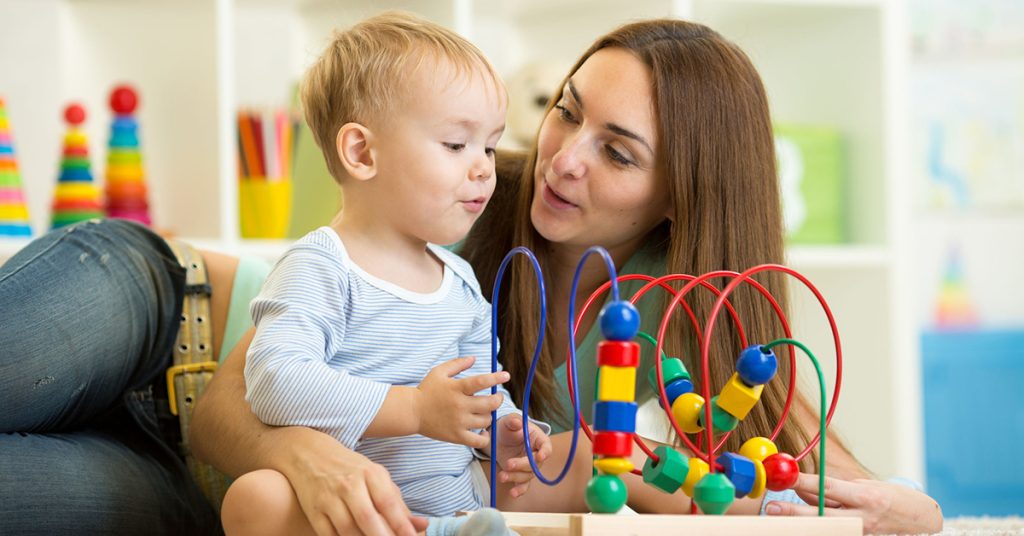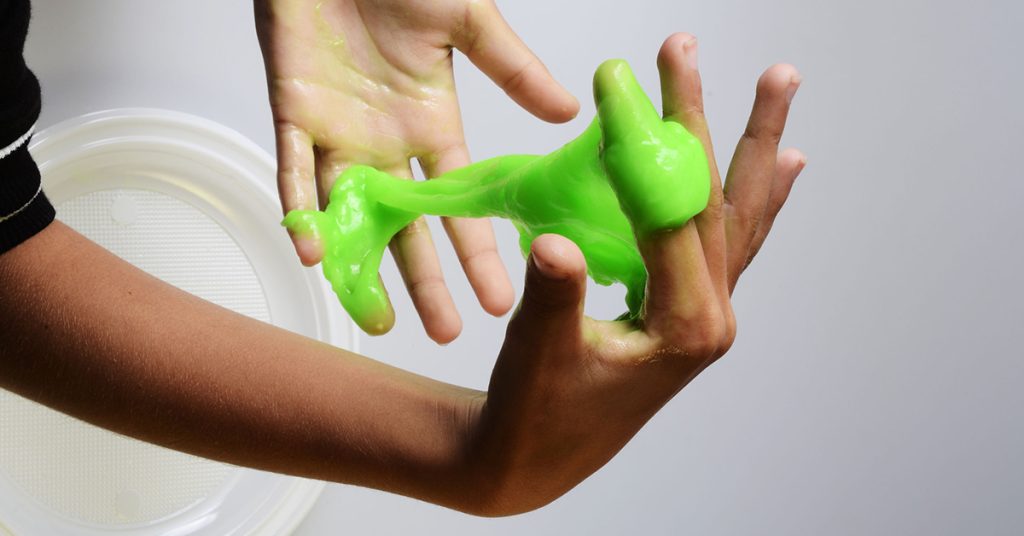Posts Tagged ‘“toy recalls”’
How to Avoid Buying a Recalled Toy or Product This Holiday Season
 When a product is recalled, you may expect it will be removed from store shelves or online marketplaces. This is not always a safe assumption. In this year’s Trouble in Toyland report, U.S. PIRG reports several toys which were recalled this year were still being sold afterward on popular websites. Last year, a Wall Street Journal investigation found Amazon was selling thousands of unsafe or banned products.
When a product is recalled, you may expect it will be removed from store shelves or online marketplaces. This is not always a safe assumption. In this year’s Trouble in Toyland report, U.S. PIRG reports several toys which were recalled this year were still being sold afterward on popular websites. Last year, a Wall Street Journal investigation found Amazon was selling thousands of unsafe or banned products.
These are upsetting headlines. The Consumer Product Safety Commission (CPSC) recalls toys when they pose a safety hazard to children. Recalls are typically only called after a report or several reports of injuries or near injuries.
Once a toy is recalled, consider it unsafe to use. Our Boston product liability lawyers share our safety tips for steering clear of unsafe toys this holiday season:
Look Up Past Toy Recalls
Visit the CPSC website and review product recalls for 2020. According to U.S. PIRG, 10 products were recalled in the 12 months between the release of its 2019 and 2020 report.
You can visit this website after you have selected a toy and before you make a purchase. Or it may be helpful to start your holiday shopping there. Search for “toy recalls” or look through all the product recalls. Note that this website does not include automobile recalls. You can find these on the National Highway Traffic Safety Administration (NHTSA) website.
Beware of Amazon, Ebay and Marketplace Websites
Some retailers only offer their own products online. Others – such as Amazon and Ebay – are marketplaces where different vendors sell products and toys. These products may be new or they may be used.
Both the sellers and websites have a responsibility to make sure they are not selling recalled products.
In August 2019, the Wall Street Journal reported that Amazon was selling more than 4,000 items which federal agencies had declared unsafe or banned. Others had misleading labeling. At least 2,000 listings were for unsafe toys and medications.
The story showed the challenges Amazon has regulating its own marketplace. If you shop on Amazon or EBay, look for information about the seller. Is a company the seller or an individual? If you have never heard of the seller, you may not want to make a purchase.
Watch for Small Parts
When buying online, one potential danger is buying a toy which contains small parts. To protect your children, always read age recommendations and look for warning labels.
Toys which are designed for children under age 3 should be labeled if they contain small parts. Toys for children age 3 to 6 must also be labeled if they contain small parts. Read our blog on identifying small parts and toy safety warnings.
Beware of Purchasing Toys on Social Media Sites
You may have heard of Facebook Marketplace or other social media sites where you can sell used toys and products. Avoid buying used toys for children here during the holidays. We also suggest you avoid buying toys from these sites during other seasons, but especially during the holidays when many of us just wait for online sales to pop up.
There is no quality control. In most cases, the product is no longer in the packaging so you can’t read the safety warnings and age recommendations.
If you buy a used product this way, you really have no way of knowing when it was purchased. You may not have a product number or product instructions.
Children’s products, such as cribs, car seats and strollers, may carry the greatest risks. These products are frequently recalled and many model types look similar. While it is illegal to sell recalled products, it happens.
One frightening story came after Fisher Price and Kids II issued their crib recalls in early 2019. Despite this, 1 in 10 daycares was still using a Fisher Price Rock n’ Play sleeper in August 2019. In Nov. 2019, Consumer Reports reported found hundreds of the recalled sleepers available online, on sites such as Craigslist and Facebook Marketplace. In addition, Consumer Reports warned other products – including Ikea dressers recalled in 2016 were still being sold.
Free Legal Consultation – Boston Toy Safety Lawyers
With more than 100 years combined experience, Breakstone, White & Gluck of Boston specializes in the representation of clients injured by unsafe or defective toys and products. We are writing about toy safety this holiday season to help parents and families make safe shopping decisions. Read our past toy safety blogs.
For a free legal consultation, contact the Boston toy safety lawyers at Breakstone, White & Gluck at 800-379-1244 or 617-723-7676. You can also use our contact form.
Trouble in Toyland Report Offers Valuable Warnings For Holiday Shoppers
There is “Trouble in Toyland.” For the 33rd year, U.S. PIRG has released its annual survey on toy safety. This is a widely respected survey, which over the years has dispensed valuable information to protect children and families. The survey has led to the recall of more than 150 unsafe toys.
Highlights from this year’s report:
- Toys which have been recalled for safety issues over the past year
- Toys which contain high levels of toxic materials, such as boron
- Toys which do not meet labeling requirements
- Toy regulations
Toy recalls
Over the past year, the Consumer Product Safety Commission (CPSC) announced more than 40 recalls of toys and children’s products, such as wagons and strollers. These recalls represent 2.7 million units. During its survey, the group did not find any recalled toys or products still being sold. This is good news for consumers, but you still need to check products for yourself by going online. You can visit the CPSC Recall list.
You can also check the U.S. PIRG’s “Trouble in Toyland” report, so you can be informed while you shop or to see if you have any recalled toys in your home (See Appendix 4, page 29). Many people do not hear about recalls so it’s worth checking.
If you find a recalled product, you can contact the manufacturer for a refund or a repair. In some cases with inexpensive toys, it may be best just to discard it from your home in a safe way. Move onto other toys.
U.S. PIRG has long advocated for improvements to the CPSC’s recall system. One concern is that companies are not required to report how many consumers actually return products for repairs or refunds.
Toxic Materials
The report focused on two toxic materials in toys: Lead and boron.
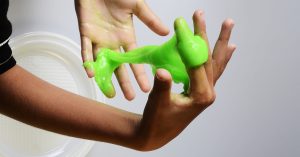
Beware of Slime: U.S. PIRG Researchers found 6 popular Slime sets which contain dangerous levels of boron.
Lead. Lead was banned from household paint, children’s products and cookware 40 years ago. But federal law states children’s products made after August 2011 can contain no more than 100 parts per million. Because lead is highly dangerous when breathed in, be careful when buying toys such as paint sets and other products. Electronic devices can contain some lead parts, as can metal components of bicycles. The American Academy of Pediatrics (AAP) recommends all products for children contain no more than trace amounts of lead (40 ppm).
Boron. Your child may be begging you to buy one of those popular slime toy sets. U.S. PIRG says you can’t trust these products are safe. Researchers found six slime products on the market had dangerously high levels of boron. One brand, “Kangaroos Original Super Cool Slime,” contained concentrations as high as 4700 parts per million (ppm).
Boron is a chemical element used mostly in glass manufacturing, pesticides, antiseptics and detergents. Children can ingest small amounts, even less than 3.68 ppm and suffer symptoms of nausea, vomiting and potentially longer term impacts on reproductive health. The Environmental Protection Agency (EPA) reports certain levels can even be lethal. Say the “Kangaroos Original Super Cool” slime has up to 4700 parts per million (ppm). Then consider that six states have made recommendations on boron limits in drinking water, non exceeding 1 ppm. It’s a frightening discrepancy. U.S. PIRG has asked the CPSC to explore setting limits on boron levels, as Canada and other countries have.
We recommend parents spend their money elsewhere this year. There are so many toys out there, which your child would enjoy without risk to their safety. Likewise, if your child plays at another friend’s home or goes to daycare, make sure the adult in charge knows you don’t want your child playing with slime sets.
| Slime Toys with Dangerous Levels of Boron |
| Kangaroos Original Super Cool Slime – Amazon – 4700 ppm |
| Kidsco Glow in The Dark Slime – Amazon, Walmart – 4600 ppm |
| Toysmith Jupiter Juice Slime – Amazon, Walmart – 1900 ppm |
| iBaseToy Fluffy Slime – Amazon – 1500 ppm |
| Haniex Soft Magic Crystal Slime – Amazon – 1400 ppm |
| Meland Fluffy Slime Amazon Boron – 1100 ppm |
| Data from U.S. PIRG “Trouble in Toyland” Report 2018. |
Labeling
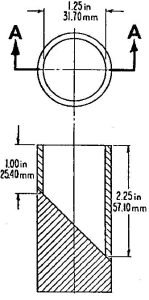
Drawing of the small cylinder test for toys. Credit: CPSC website.
Toymakers are responsible for properly labeling their products, especially those with small parts which are not intended for children under age 3. This warning is essential. Children are often putting small parts in their mouths. From 2001 to 2016, more than 110 children died this way, according to U.S. PIRG.
What’s important for consumers to know is the CPSC has a Small Parts Ban. Toys must be tested to make sure they cannot pass through a test cylinder, which has a diameter of 1.25 inches. The cylinder has a slanted bottom, opening 1 to 2.25 inches. If a toy can pass through, it must be properly labeled: WARNING: Choking Hazard-Small Parts. Not for Children Under 3 Yrs.
Researchers identified a few toys which are being sold online without age appropriate labels this year – Hatchimals and L.O.L. Surprise toys. Parents should watch and carefully inspect every purchase you make. A good rule of thumb is to open every toy well in advance of giving it to a young children. Open it out of your children’s reach, such as in a basement.
Balloons are another product which are not being labeled properly. Balloons should come with warnings that they are a potential choking hazard to children under 8 years old. Yet, 87 percent of the latex balloons on Amazon.com carried no warnings, according the survey.
Toy Regulations
As consumers, we deal with packaging, price tags and shipping dates more than regulations. But the “Trouble in Toyland” report shares three important regulations on page 17:
- Small Parts Ban (1979)
- The Child Safety Prevention Act of 1994
- The Consumer Product Safety Improvement Act of 2008
Read the 2018 “Trouble in Toyland” report.
About Breakstone, White & Gluck
Free Legal Consultation: 800-379-1244
Breakstone, White & Gluck of Boston specializes in handling personal injury and product liability cases. This holiday season, we are committed to sharing toy safety tips as part of Project KidSafe campaign. We wish you a safe and healthy holiday season.
Learn more about our firm: www.bwglaw.com.
“Worst Toys List” Warns of “Toy Weapons,” Choking Hazards and Hazards of Buying Toys Online
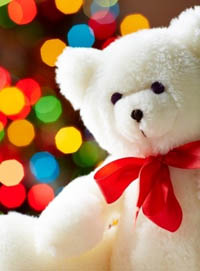 The World Against Toys Causing Harm, Inc. has released its 41st annual “10 Worst Toys” list. This year, the Boston-based non-profit nominated toys which posed a choking hazard, had improper labeling and several “toy weapons,” including toy guns, sling shots and boomerangs.
The World Against Toys Causing Harm, Inc. has released its 41st annual “10 Worst Toys” list. This year, the Boston-based non-profit nominated toys which posed a choking hazard, had improper labeling and several “toy weapons,” including toy guns, sling shots and boomerangs.
The report said, “These toys, that resemble real weaponry, have no place in the hands of children. Evidence of the potential for tragedy is the recent death of a thirteen-year-old boy in Santa Rose, CA, who was fatally shot by a police officer who mistook his toy gun for a real weapon.”
In one case, the World Against Toys Causing Harm (or W.A.T.C.H.) caught a vendor selling slingslots on Amazon.com. Massachusetts law prohibits sale of slingshots and New Jersey, Rhode Island and Washington have similar laws.
W.A.T.C.H. urged consumers to be vigilant even if they are purchasing toys from a well-known brand name. It stated there have been 29 toy recalls in the past 12 months, which included over one million units of unsafe and defective toys in the United States and Canada. Of these, 20 recalls were initiated for toys which posed choking and ingestion risks.
This year’s list includes:
1) Army Force Automatic Rifle
Hazard: Realistic toy weaponry and inconsistent age recommendations on labeling and Amazon.com.
2) Big Rock & Roll Ball Pit
Hazard: Potential for impact injuries because children as young as 3-years-old are encouraged to climb inside a rolling, inflatable ball. W.A.T.C.H. also criticizes the package, which shows children playing with no parental supervision.
3) Max Steel Interactive Steel with Turbo Sword
Hazard: Potential for impact and facial injuries.
4) Disney Princess Backpack Fishing Kit
Hazard: Potential for chemical ingestion injuries. The cardboard insert warns the play item may contain lead which may be harmful if eaten or chewed.
5) Black Widow Folding Slingshot
Hazard: Potential for serious bodily injuries. Illegal to sell in Massachusetts and three other states. On Amazon.com, the product carried a “for 6 months and up” age recommendation.
6) Little Drummer
Hazard: Potential for ingestion and choking hazards. The drum is sold for babies as young as 12-months-old and the drumstick could block a child’s airway.
7) Boomerang “Throw & Catch”
Hazard: Boomerangs should not be sold to children of any age. Online toy recommendations and those on the package were also inconsistent. Online, the boomerang was recommended for children 16 months and up versus on the package, which stated it was not for children under 3 years.
8) Disney Baby Snow White
Hazard: Potential for choking hazards. The toy is marketed for children 2 years old and up, but has small detachable pieces, such as hair accessories.
9) Nerf N-Strike Jolt Blaster
Hazard: This toy is marketed for children age 8 and older. It has a dart which can be shot and potentially cause eye injuries. On the Hasbro website, the product description reads “Hide it in your pocket to maneuver in close to your enemy, then pull down the cocking handle to ready your shot. Pull the trigger and reload fast to win the day!”
10) The Spooner-Freestyle
Hazard: Potential for head and other impact injuries. This toy resembles a skateboard without wheels and is marketed for children age 3 and older. It does not mention use of safety gear and none is worn by children on the packaging.
Related:
10 Worst Toys of 2013, W.A.T.C.H.
Trouble in Toyland, U.S. PIRG.
Read More
Tips for Buying Safe Toys This Holiday
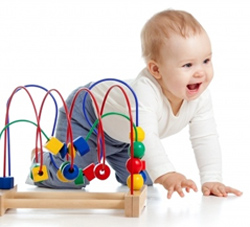 Many of us worry about buying unsafe toys during the holiday season. This concern has merit. In 2011 alone, more than 262,000 toy-related injuries were reported and another 13 children were killed while playing with dangerous toys, according to the Consumer Product Safety Commission (CPSC). This year, the CPSC reports toy recalls are down, but toy-related injuries have risen.
Many of us worry about buying unsafe toys during the holiday season. This concern has merit. In 2011 alone, more than 262,000 toy-related injuries were reported and another 13 children were killed while playing with dangerous toys, according to the Consumer Product Safety Commission (CPSC). This year, the CPSC reports toy recalls are down, but toy-related injuries have risen.
What to remember when you shop:
Choose Age-Appropriate Toys. Toys should have labels explaining age recommendations and other important warnings, such as “Flame retardant/Flame resistant.” The CPSC recommends avoiding toys with small pieces for children under age 3. They pose a choking hazard. For older children, avoid playsets with small magnets and balloons.
Buying Toys Online. Read instructions for use carefully. If you are buying from Amazon or eBay, remember those websites are only shopping forums. Take note of which company is selling the product.
Sharp Pieces.Toys designed for children under 8 years of age should not have sharp glass or metal edges.
Shattered Pieces. Set aside any toy that looks like it could easily shatter into small pieces and cause choking, cuts or other serious personal injuries.
Magnets.Toys with small magnets are dangerous to children. When children swallow one or more, the magnets can pull together and cause internal injuries, resulting in vomiting, abdominal pain and infection. In the past few years, children have suffered serious injuries and even death. In response, the CPSC has started a Magnets Information Center.
Loud Noises.Toy guns, tablets and talking dolls can damage a child’s hearing over time if used too closely.
Cords and Strings. Toys with long cords and strings can cause strangulation. Carefully consider this before you buy crib gyms, baby mobiles and swings. If a child can reach a baby mobile, it should be removed.
Batteries. Make sure an adult, not a child oversees battery charging for any toys or electronics. Avoid toys with small button-cell batteries, which can be easily swallowed and cause burning, esophagus pain and vomiting among other symptoms. Also be aware of other appliances, such as remote controls, which use these small batteries.
Sports Equipment. When you buy a sports-related toy, make sure you also buy the safety equipment, such as bike helmets for bikes. Children are required to wear bike helmets in Massachusetts until age 16 and if an accident were to occur, they are an important tool for preventing a lifelong head injury.
Related:
Holiday Toy Safety, Consumer Product Safety Commission.
Tiny Batteries Causing Big Health Problems for Kids, ABC News.
Read More


